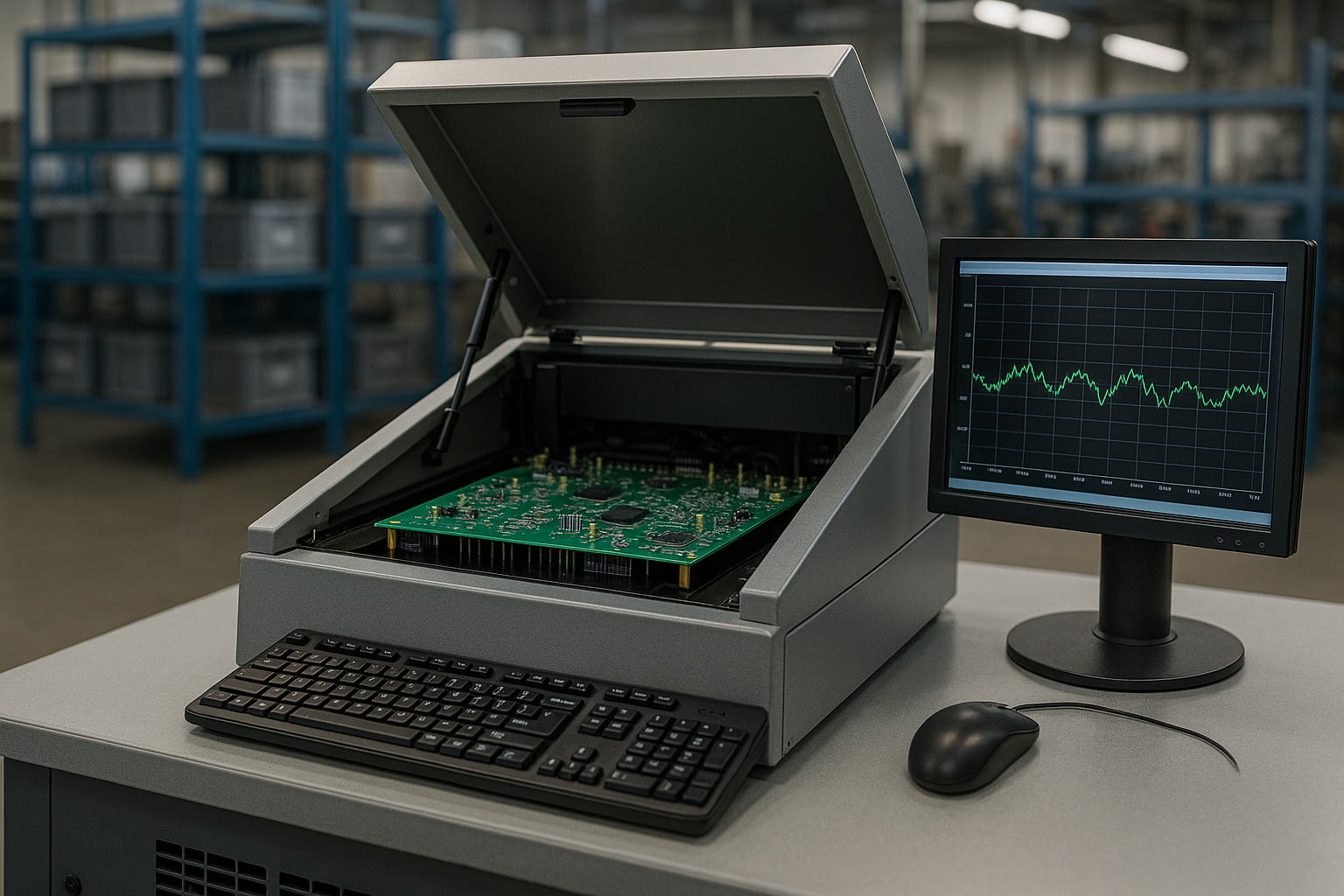In House EMS Test Engineering

5
Benefits of In-House EMS Test Engineering: ICT, FCT & EOL Under One Roof
Most EMS providers outsource production test design—or ask you to provide it. That’s where real pain shows up: latent shorts and interconnect issues, firmware/ID mismatches, fixture delays, and audit gaps right when builds are most fragile. We keep test inside the factory—architecture → fixture/hardware → software →deployment → data—so the team that owns coverage also runs the line. Result: faster launches, fewer escapes, cleaner audits, and one owner for outcomes.

Why in-house test solutions (ICT, FCT & EOL) matter to buyers
Speed without quality drift. When the same team that designs your fixtures and software also runs your lines, debug loops shrink. Learnings from EVT→DVT→PVT move straight into code and fixtures, so FPY stabilizes early—especially in LVHM.
One owner for coverage and compliance. We map ICT + boundary-scan (IEEE1149.1), FCT, end-of-line, hi-pot, and on-board programming into a single coverage plan tied to your risk profile and standards(IPC/IEC). That removes gray zones between third parties and gives clear audit evidence.
Traceability you can actually use. Every station writes unit-level logs to a centralized server; role-based access lets you pull histories by serial number; MES checkpoints block downstream movement without a pass. It’s ISA-95-friendly traceability, not a folder of CSVs.
What our in-house stack includes (same tech, framed as counter measures)
1) In-house test solutions (design → deployment → upkeep)
- Architecture definition (what to test, where to test, how to prove it) aligned to DFT and IPC electrical test expectations (test-point access, opens/shorts conditions) to prevent blind spots.
- Fixture + electronics (bed-of-nails, boundary-scan access, programming sockets) built for maintainability, so fixtures don’t become bottlenecks.
- Test software designed for repeatability and change control, so limit drift is contained.
- Validation + golden unit workflow; then maintenance & upgrades as the product evolves, keeping recipes current.
2) Test automation (LabVIEW and beyond)
- Automated Production Testing with deterministic sequences and station health checks to catch instability early.
- Remote access for diagnostics and upgrades—cuts MTTR without waiting for third parties.
- Role-based access and test/counter logs so engineering sees failures fast and procurement sees stability over time.
3) Real-time test data access (by serial number)
- Centralized server for test data (backed up, permissioned).
- Customer portals to fetch logs by UID/serial—useful for field returns and PPAP/APQP packages where applicable.
- MES integration so test is a gate, not a suggestion; no pass, no ship.
Our production test engineering coverage (ICT, OBP, FCT, EOL)
- In-Circuit Testing (ICT) — electrical opens/shorts, component values/tolerances, net integrity; pairs well with boundary-scan/JTAG for dense boards with limited access.
- On-Board Programming (OBP) — MCU/SoC/FPGA programming + verify on the line, not a side room (prevents firmware/ID mismatch).
- Functional Test (FCT) — power-up, interfaces, sensors/actuators, firmware handshake; realistic stimuli and limit checking.
- End-of-Line (EOL) — final feature checks with production-rate fixturing; barcode/UID binding of logs.
- Hi-Pot / Safety — dielectric withstand/insulation resistance per product category, aligned to IEC 62368-1, where applicable.
- Reliability & Stress — burn-in/ESS or focused stress screens on failure-prone subsystems; evidence captured in the same data backbone.
How in house EMS Test Engineering improves your program
- Shorter time-to-stable yield: Coverage and fixtures are tuned in real time by the team running the line.
- Fewer field escapes: ICT + boundary-scan + FCT close different failure modes; EOL + hi-pot protect safety/functional integrity.
- Cleaner supplier audits: IPC acceptance criteria (IPC-A-610) at inspection; electrical test expectations (IPC-9252) at bare-board; station logs tied to unit UIDs for end-to-end traceability.
- Lower cost-to-serve: In-house design reduces 3rd-party coordination and lost weeks; remote updates cut site visits.
In-house EMS test engineering solutions - a decisive advantage
- High-density/complex boards (HDI, fine-pitch, BGAs) where bed-of-nails access is tight and JTAG/boundary-scan becomes essential.
- Safety/regulated products that need hi-pot and safety evidence aligned to IEC 62368-1 families.
- LVHM portfolios with frequent ECNs where fixture/software agility beats a monolithic turnkey.
- Programs needing live transparency (warranty-sensitive, field-service feedback loops, or tight PPAP/APQP packages).
What you can expect as a customer with our In-House EMS Test Engineering
- A single owner for test—no hand-offs, no finger-pointing.
- A coverage plan that explicitly shows what ICT catches, what boundary-scan verifies, and what FCT proves—with limits and evidence.
- Per-unit test history downloadable by serial number for returns analysis and compliance.
- Change-controlled fixtures and code, with remote diagnostics to keep lines moving.
Bottom line Benefits of In-House EMS Test Engineering: ICT, FCT & EOLAll Under One Roof
Outsourcing test design adds time, hand-offs, and risk—the same problems that cause escapes, drift, and audit friction. Keeping ICT,boundary-scan/JTAG, FCT, EOL, hi-pot, OBP, and MES traceability inside the program team turns test into a practical lever: launch faster, protect yield, simplify audits, and keep a clean, queryable history for every unit shipped. That’s production test as a realfix, not a brochure.




